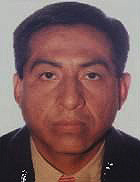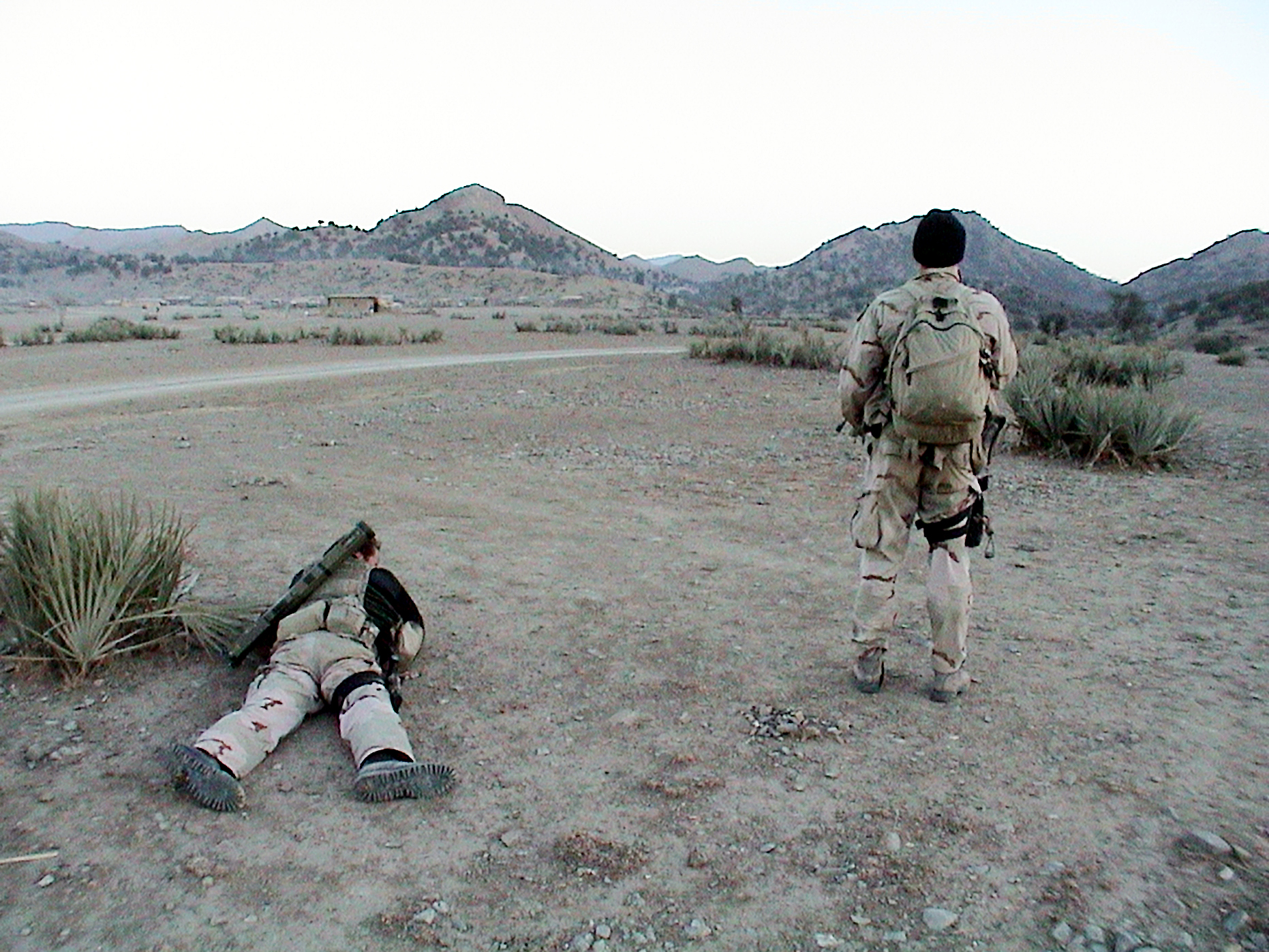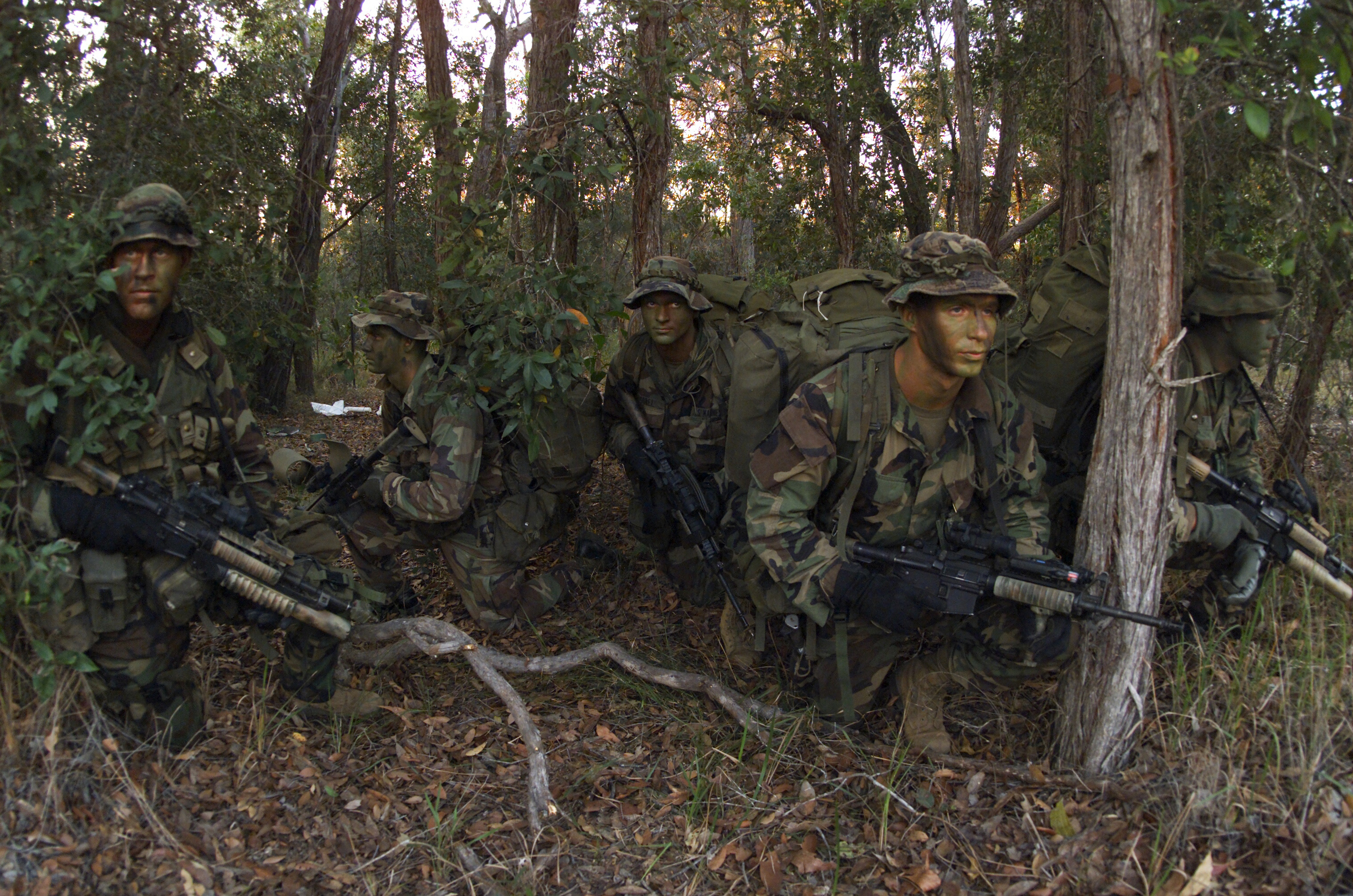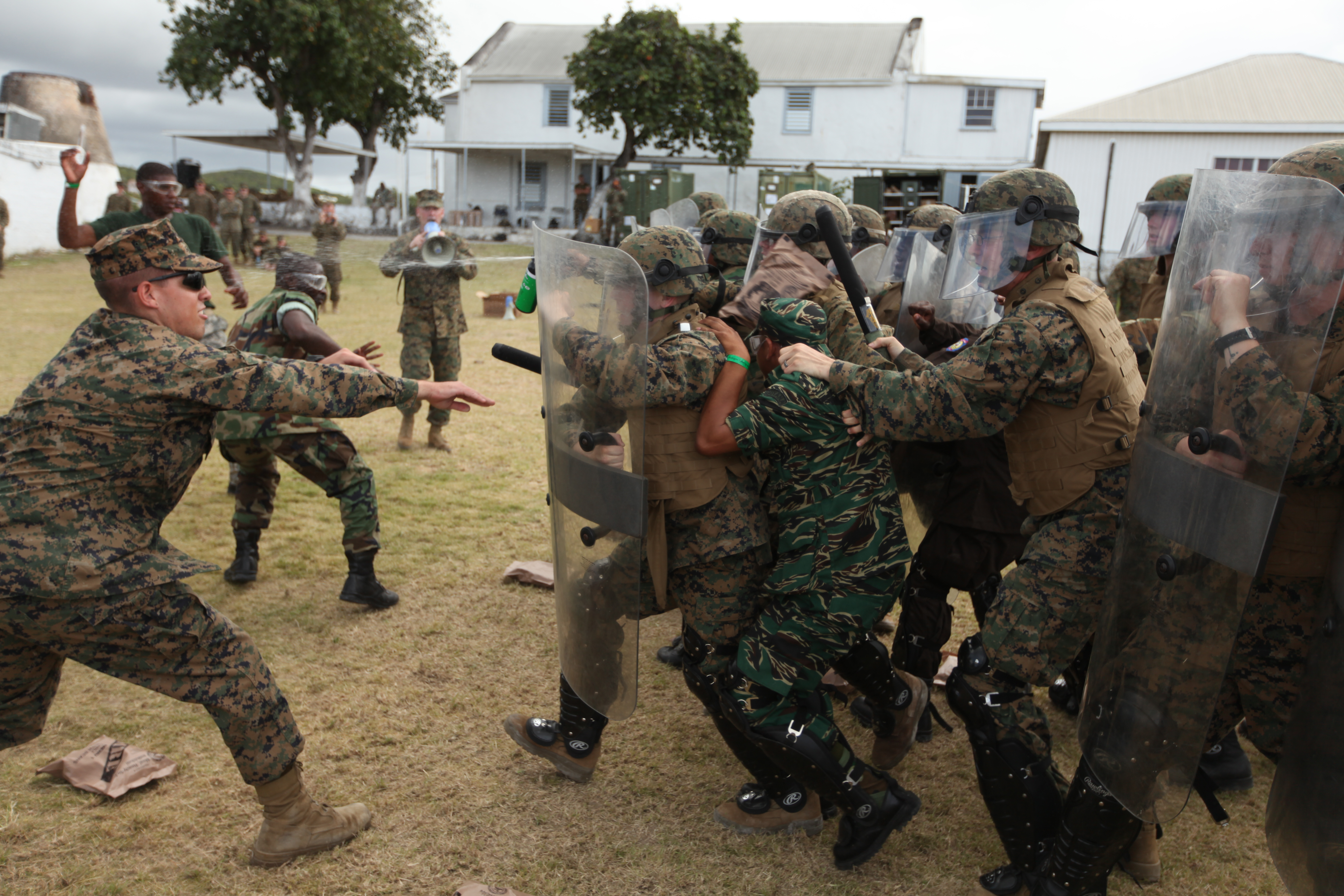|
Sinchis
The Sinchis (from the Quechua word '' sinchi'', 'strong, brave'), also known as the Sinchis de Mazamari after their training location, are a police tactical unit of the National Police of Peru specialized in air assault and airborne operations, anti-irregular military, countering illicit drug trafficking, counterinsurgency, counterterrorism, hostage rescue crisis management, and operating in difficult to access terrain especially in mountainous forest areas. The commando unit was part of the Civil Guard from its formation in 1965 until 1991, when it was incorporated into the National Police of Peru. The Sinchis played an important role in the counterinsurgency war against the Shining Path during the internal conflict in Peru in the 1980s and 1990s. According to the Truth and Reconciliation Commission, the commando unit is responsible for operating in difficult to access terrain and serious crimes committed against the Quechua population of the regions of Ayacucho, Apurimac and ... [...More Info...] [...Related Items...] OR: [Wikipedia] [Google] [Baidu] |
Internal Conflict In Peru
The internal conflict in Peru is an armed conflict between the Government of Peru and the Maoist guerrilla group Shining Path. The conflict's main phase began on 17 May 1980 and ended in December 2000. From 1982 to 1997 the Túpac Amaru Revolutionary Movement (MRTA) waged its own insurgency as a Marxist–Leninist rival to the Shining Path. As fighting intensified in the 1980s, Peru had one of the worst human rights records in the Western Hemisphere and experienced thousands of forced disappearances while both the Peruvian Armed Forces and Shining Path acted with impunity, sometimes massacring entire villages. 50,000 to 70,000 people were killed, making it the bloodiest war in the country's independent history. This includes many civilians who were deliberately targeted by all factions. The Indigenous peoples were disproportionately targeted, with 75% of those killed speaking Quechua as their native language. Since 2000, the number of deaths has dropped significantly a ... [...More Info...] [...Related Items...] OR: [Wikipedia] [Google] [Baidu] |
Mazamari District
Mazamari District is one of eight districts of the Satipo Province in Peru. Instituto Nacional de Estadística e Informática. Banco de Información Distrital''. Retrieved April 11, 2008. The homonymous city of Mazamari serves as the district's capital and is served by the Mayor Nancy Flores Páucar Airport. It also hosts the National Police's unit known as the Sinchis The Sinchis (from the Quechua word '' sinchi'', 'strong, brave'), also known as the Sinchis de Mazamari after their training location, are a police tactical unit of the National Police of Peru specialized in air assault and airborne operations, .... References Districts of the Department of Junín Districts of the Satipo province {{Junín-geo-stub ... [...More Info...] [...Related Items...] OR: [Wikipedia] [Google] [Baidu] |
Civil Guard (Peru)
The Civil Guard (; ) was the main preventive police force of Peru until its dissolution in 1988. As a national gendarmerie force, it was responsible for civil Police, policing under the authority of the Ministry of the Interior (Peru), Ministry of the Interior, while investigative work was carried out by the Peruvian Investigative Police. It was also supported at times by the Republican Guard (Peru), Republican Guard. During its dissolution process, it became known as the General Police () until its formal integration into the National Police of Peru in 1991. The corps is colloquially known as the ' (reputable). It was modelled after the Spanish Civil Guard (Spain), Civil Guard, which assisted in its formation. History Origin The origins of the Civil Guard date back to 1873, when President Manuel Pardo (politician), Manuel Pardo approved and signed two Supreme Decrees on December 31 of 1873 (published in El Peruano, the Peruvian Government's official newspaper, on January 28, 1 ... [...More Info...] [...Related Items...] OR: [Wikipedia] [Google] [Baidu] |
Mountain Warfare
Mountain warfare or alpine warfare is warfare in mountains or similarly rough terrain. The term encompasses military operations affected by the terrain, hazards, and factors of combat and movement through rough terrain, as well as the strategies and tactics used by military forces in these situations and environments. Mountain ranges are of strategic importance since they often act as a natural border and may also be the origin of a water source such as the Golan Heights. Attacking a prepared enemy position in mountain terrain generally requires a greater ratio of attacking soldiers to defending soldiers than a war conducted on level ground. Mountains present natural hazards such as lightning, strong gusts of wind, rockfalls, avalanches, snowpacks, ice, extreme cold, and glaciers with their crevasses; in these ways, it can be similar to cold-weather warfare. The generally uneven terrain and the slow pace of troop and material movements are additional threats to combatants. ... [...More Info...] [...Related Items...] OR: [Wikipedia] [Google] [Baidu] |
Revolutionary Left Movement (Peru)
The Revolutionary Left Movement (in Spanish: ''Movimiento de la Izquierda Revolucionaria'') was a Marxist–Leninist guerilla group founded in Peru in 1962 by Luis de la Puente Uceda and his group '' APRA Rebelde'', a splinter group from the APRA which had rallied the government in the 1950s and 1960s. The group disavowed gradual reform and called for radical revolution. Inspired by the Cuban Revolution and close to a non-aligned position which opposed itself to the Communist Party of Peru, the Soviet Union and China, the group initiated guerrilla actions against the government in 1965. After its leader's death at the end of 1965, the MIR split into three different factions. One of them, the MIR-EM, merged with the Revolutionary Socialist Party (Marxist–Leninist) in 1982 to create the Movimiento Revolucionario Túpac Amaru (MRTA). The two others factions, MIR-VR and MIR-IV, joined the parliamentary left-wing coalition Izquierda Unida in the early 1980s. Origins Th ... [...More Info...] [...Related Items...] OR: [Wikipedia] [Google] [Baidu] |
National Police Of Peru
The National Police of Peru (, PNP) is the national police force of Peru. Its jurisdiction covers the nation's land, sea, and air territories. Formed from the merger of the Investigative Police, the Civil Guard, and the Republican Guard in 1988, it is one of the largest police forces in Latin America. Its mission is to preserve domestic order, public order and national security, in order to enforce the law and protect the people of Peru. The PNP is controlled by the Ministry of the Interior. The PNP has a number of divisions, tasked with enforcing specific aspects of the law; among the more well known are DIROES (Special Operations), DIRANDRO (Anti-Narcotics Unit), DIRINCRI (Criminal Investigations), and DIRCOTE (Anti-Terrorism). History After the proclamation of Independence of Peru in 1821 by José de San Martín, the Civic Guard and the Civic Militia were created, with José Bernardo de Tagle as Inspector General. In a decree issued on 7 January 1825, Simón Bolívar esta ... [...More Info...] [...Related Items...] OR: [Wikipedia] [Google] [Baidu] |
Urban Warfare
Urban warfare is warfare in urban areas such as towns and cities. Urban combat differs from combat in the open at both Military operation, operational and the Military tactics, tactical levels. Complicating factors in urban warfare include the presence of civilians and the complexity of the urban terrain. Urban combat operations may be conducted to capitalize on strategic or tactical advantages associated with the possession or the control of a particular urban area or to deny these advantages to the enemy. It is considered to be arguably the most difficult form of warfare. Fighting in urban areas negates the advantages that one side may have over the other in armor, heavy artillery, or air support. Ambushes laid down by small groups of soldiers with handheld anti-tank weapons can destroy entire columns of modern armor (as in the Battle of Grozny (1994–95), First Battle of Grozny), while artillery and air support can be severely reduced if the "superior" party wants to limit ci ... [...More Info...] [...Related Items...] OR: [Wikipedia] [Google] [Baidu] |
Tracking (Scouting)
Tracking is an element of scouting that encompasses observation, stalking and the following of a trail. Unlike the form of tracking Tracking (hunting), employed in hunting, tracking within the Scouting movement tends to focus on the tracking of people as well as animals. One form of training includes the laying a trail or following a trail laid by others. A trail is made up of a series of signs, largely comprising directions, which are laid on the ground. History Tracking has been part of scouting and guiding since the beginning; it was the subject of several of Robert Baden-Powell, Baden-Powell's campfire yarns. In the eleventh he wrote that "One of the most important things that a Scout has to learn... is to let nothing escape his attention". He suggested several methods of learning observational skills, such as Kim's Game and other memory games. Following this, in yarn twelve, he wrote about Spoor (animal), spooring, relating to the tracking of people and animals. Scouts were e ... [...More Info...] [...Related Items...] OR: [Wikipedia] [Google] [Baidu] |
Special Reconnaissance
Special reconnaissance (SR) is conducted by small units, such as a recon team, made up of highly trained military personnel, usually from special forces units and/or military intelligence organizations. Special reconnaissance teams operate behind enemy lines, avoiding direct combat and detection by the enemy. As a role, SR is distinct from commando operations, but both are often carried out by the same units. The SR role frequently includes covert direction of airstrikes and indirect fire, in areas deep behind enemy lines, placement of remotely monitored sensors, and preparations for other special forces. Like other special forces, SR units may also carry out direct action and unconventional warfare, including guerrilla operations. In intelligence terms, SR is a human intelligence (HUMINT) collection discipline. Its operational control is likely to be inside a compartmented cell of the HUMINT, or possibly the operations, staff functions. Since such personnel are trained for intell ... [...More Info...] [...Related Items...] OR: [Wikipedia] [Google] [Baidu] |
Special Operations
Special operations or special ops are military activities conducted, according to NATO, by "specially designated, organized, selected, trained, and equipped forces using unconventional techniques and modes of employment." Special operations may include reconnaissance, unconventional warfare, and counterterrorism, and are typically conducted by small groups of highly trained personnel, emphasizing sufficiency, stealth, speed, and tactical coordination, commonly known as ''special forces'' (SF) or ''special operations forces'' (SOF). History Australia In World War II, following advice from the British, Australia began raising special forces. The first units to be formed were independent companies, which began training at Wilson's Promontory in Victoria in early 1941 under the tutelage of British instructors. With an establishment of 17 officers and 256 men, the independent companies were trained as "stay behind" forces, a role that they were later employed in against the Japa ... [...More Info...] [...Related Items...] OR: [Wikipedia] [Google] [Baidu] |
Reconnaissance
In military operations, military reconnaissance () or scouting is the exploration of an area by military forces to obtain information about enemy forces, the terrain, and civil activities in the area of operations. In military jargon, reconnaissance is abbreviated to ''recce'' (in British, Canadian, Australian English) and to ''recon'' (in American English), both derived from the root word ''reconnoitre'' / ''reconnoitering''. The types of reconnaissance include patrolling the local area of operations and long-range reconnaissance patrols, which are tasks usually realized in the United States of America by U.S. Army Rangers, cavalry scouts, and military intelligence specialists, using navy ships and submarines, Aerial reconnaissance, reconnaissance aircraft, satellites to collect raw intelligence; and establishing observation posts. Moreover, espionage is different from reconnaissance, because spies work as civilians in enemy territory. Etymology The word is derived from the ... [...More Info...] [...Related Items...] OR: [Wikipedia] [Google] [Baidu] |
Riot Control
Riot control is a form of public order policing used by law enforcement, military, paramilitary or security forces to social control, control, disperse, and arrest people who are involved in a riot, unlawful Demonstration (people), demonstration or unlawful protest. If a riot is spontaneous, then actions which cause people to stop and think (e.g. loud noises or issuing instructions in a calm tone) can be enough to stop it. However, these methods usually fail when there is severe anger, or the riot was planned or organized. Riot control personnel have long used less lethal weapons such as Baton (law enforcement), batons and whips to disperse crowds and detain rioters. Since the 1980s, riot control officers have also used tear gas, pepper spray, rubber bullets, stun grenades, and electric tasers. In some cases, riot squads may also use Long Range Acoustic Devices, water cannons, armoured fighting vehicles, aerial surveillance, police dogs or mounted police on horses. Persons perform ... [...More Info...] [...Related Items...] OR: [Wikipedia] [Google] [Baidu] |









